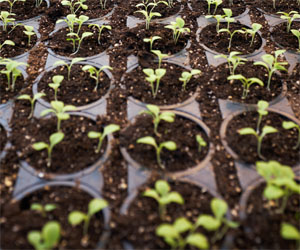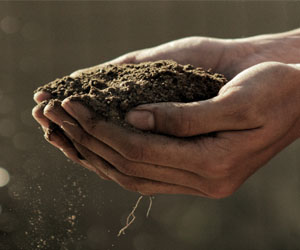


A Cleaner Home And Healthier Planet

The desire for cleaner living spaces and a healthier environment has led to a surge in green cleaning practices and recommendations. Green cleaning prioritizes the use of natural, eco-friendly products and sustainable methods to achieve a clean and healthy home. In this article, we'll provide you with valuable green cleaning recommendations that not only benefit your living space but also contribute to a more sustainable planet.
1. Switch To Eco-Friendly Cleaning Products
One of the simplest and most effective ways to embrace green cleaning is to replace traditional cleaning products with eco-friendly alternatives. Look for cleaning products that have been certified as environmentally safe, such as those bearing the "EcoLogo" or "Green Seal" labels. These certifications ensure that the products meet stringent environmental and health standards.
2. Create Your Homemade Cleaning Solutions
Another excellent recommendation is to make your own green cleaning solutions using readily available household ingredients. Common items like white vinegar, baking soda, lemon juice, and essential oils can effectively clean a wide range of surfaces and provide a fresh, natural scent. You can mix these ingredients to create all-purpose cleaners, window cleaners, and even disinfectants.
3. Prioritize Reusable Cleaning Tools
Invest in high-quality, reusable cleaning tools such as microfiber cloths, mop heads, scrub brushes, and dusters. These tools are not only efficient at capturing dirt and dust, but they also eliminate the need for disposable cleaning supplies. By opting for reusable tools, you can significantly reduce waste and contribute to a cleaner planet.
4. Embrace Energy-Efficient Cleaning Appliances
When it's time to replace your cleaning appliances, consider investing in energy-efficient models. Energy-efficient vacuum cleaners, steam cleaners, and other cleaning appliances not only save you money on energy bills but also reduce your overall energy consumption, which is better for the environment.
5. Practice Water Conservation
Water is a precious resource, and green cleaning recommendations also include water conservation. When cleaning, be mindful of the amount of water you use. Opt for water-saving practices such as using a bucket for mopping rather than letting the water run continuously. Waterless cleaning technologies, like dry steam cleaning, are also excellent options that minimize water usage.
6. Avoid Air Fresheners With Synthetic Fragrances
Many conventional air fresheners contain synthetic fragrances that can contribute to indoor air pollution. Instead, opt for natural air fresheners like open windows to allow fresh air to circulate or use essential oils in a diffuser to naturally freshen the air.
7. Choose Sustainable Packaging
Green cleaning isn't just about the contents of the cleaning products; it extends to the packaging as well. Choose cleaning products that use recycled or biodegradable packaging materials. Sustainable packaging reduces waste and lessens the environmental impact of your cleaning routine.
8. Practice Regular Cleaning
One of the most effective green cleaning recommendations is to maintain a regular cleaning routine. Preventing the buildup of dirt and grime reduces the need for heavy-duty cleaning products and keeps your living space consistently cleaner.
Benefits Of Green Cleaning Recommendations
By following these green cleaning recommendations, you can enjoy a multitude of benefits:
Improved Indoor Air Quality: Green cleaning reduces the release of harmful volatile organic compounds (VOCs) and toxic chemicals, leading to cleaner indoor air that benefits your health.
Lower Environmental Impact: These recommendations result in reduced water and energy consumption, less waste, and a smaller ecological footprint.
Cost Savings: Many green cleaning practices and solutions ultimately lead to cost savings, as they reduce the need for expensive cleaning products and minimize resource use.
Healthier Living Spaces: Recommendations that eliminate the use of harsh chemicals create safer and healthier living environments, especially for individuals with sensitivities and allergies.
Green cleaning recommendations empower you to create a cleaner, healthier home while contributing to a more sustainable planet. Embracing these recommendations is not just a lifestyle choice; it's a commitment to a better future for both you and the environment.






Shaping Spaces For Comfort And Functionality
 Functional Layout: An effective housing design starts with a well-thought-out floor plan. It considers the practical needs of residents, from the number of bedrooms and bathrooms to the placement of the kitchen and living areas. An efficient layout maximizes space utilization and minimizes wasted square footage.
Functional Layout: An effective housing design starts with a well-thought-out floor plan. It considers the practical needs of residents, from the number of bedrooms and bathrooms to the placement of the kitchen and living areas. An efficient layout maximizes space utilization and minimizes wasted square footage.
Aesthetics: While functionality is paramount, aesthetics are equally important. Aesthetically pleasing design can enhance the quality of life for residents. The choice of materials, colors, and architectural elements can create a sense of comfort, style, and identity within the home.
Sustainability: Sustainable housing design is on the rise, driven by a growing awareness of environmental concerns. Green building practices focus on using eco-friendly materials, energy-efficient technologies, and renewable energy sources to minimize the carbon footprint of a home.
Adaptability: Housing design should be flexible and adaptable to accommodate the changing needs of its inhabitants. This is particularly important in a world where the dynamics of families and lifestyles evolve over time. Features like convertible spaces and modular furniture are becoming more popular.
Balancing Prosperity And The Planet
 One of the key principles of sustainable development is the recognition that our planet's resources are finite. As we continue to grow in population and economic activity, it becomes imperative to manage our resources more responsibly. This involves reducing resource consumption, minimizing waste, and promoting energy efficiency. Sustainable development encourages innovation and the adoption of cleaner, greener technologies to mitigate our impact on the environment.
One of the key principles of sustainable development is the recognition that our planet's resources are finite. As we continue to grow in population and economic activity, it becomes imperative to manage our resources more responsibly. This involves reducing resource consumption, minimizing waste, and promoting energy efficiency. Sustainable development encourages innovation and the adoption of cleaner, greener technologies to mitigate our impact on the environment.
Environmental sustainability is a central pillar of sustainable development. It advocates for the conservation of ecosystems, the protection of biodiversity, and the reduction of pollution and emissions. It promotes responsible land and resource management, focusing on sustainable agriculture, forestry, and fisheries. Additionally, it calls for the reduction of greenhouse gas emissions to combat climate change, a global challenge that threatens the well-being of people and ecosystems alike.
However, sustainable development is not only about the environment. It also prioritizes social equity and inclusivity. This means ensuring that all members of society have access to basic services like healthcare, education, and clean water. It aims to reduce poverty and inequality, empowering communities and individuals to improve their own quality of life.
Paving The Way For A Smarter World
 Enhancing Everyday Life
Enhancing Everyday Life
Intelligent solutions are all around us, making our daily routines more convenient and enjoyable. Take, for example, the personal virtual assistants like Siri and Alexa, which have become integral parts of many households. These AI-driven solutions can answer questions, provide weather updates, control smart home devices, and even play your favorite music with a simple voice command. They are a prime example of how intelligent solutions have become an indispensable part of our lives, adding a layer of convenience and personalization to our everyday experiences.
Efficiency In Business
In the corporate world, intelligent solutions are optimizing business operations, boosting productivity, and improving decision-making processes. Data analytics, for instance, helps companies gain insights into customer behavior and market trends. This, in turn, allows for more informed and targeted marketing strategies, ultimately leading to better outcomes and growth. Additionally, the automation of repetitive tasks through intelligent solutions can free up employees to focus on more creative and strategic aspects of their work.
Healthcare And Well-Being
The healthcare industry is witnessing a revolution through the application of intelligent solutions. Telemedicine, for instance, allows patients to receive medical consultations from the comfort of their homes. Wearable health monitoring devices provide real-time data to both patients and healthcare professionals, helping to manage chronic conditions and improve overall health. Artificial intelligence is also aiding in the analysis of medical images, enabling more accurate diagnoses and treatment planning.
Transportation And Mobility
Intelligent solutions have the potential to redefine the way we move from one place to another. Autonomous vehicles are a prominent example. These vehicles use sensors, cameras, and AI algorithms to navigate roads and make split-second decisions, aiming to increase safety and efficiency in transportation. Additionally, smart transportation systems can help reduce traffic congestion and energy consumption, making our daily commutes more sustainable.
The Dynamics Of Growth And Development
 Physical Growth
Physical Growth
Physical growth is most evident during infancy and adolescence. During infancy, babies experience rapid physical growth, leading to significant weight gain and a noticeable increase in length. In adolescence, a growth spurt occurs, contributing to the dramatic changes in height and the development of secondary sexual characteristics.
Cognitive Development
Cognitive development is the process of acquiring knowledge, reasoning abilities, problem-solving skills, and language proficiency. Jean Piaget's theory of cognitive development identifies stages of development, from the sensorimotor stage in infancy to the formal operational stage in adolescence. This progression reflects the increasing complexity of thought processes and problem-solving abilities.
Emotional And Social Development
Emotional and social development is equally critical. Erik Erikson's psychosocial stages of development outline the challenges individuals face at different life stages. Emotional intelligence, the ability to recognize, understand, and manage one's own emotions, plays a vital role in social development, enabling individuals to form healthy relationships and navigate complex social situations.
Factors Influencing Growth And Development
Numerous factors influence the trajectory of growth and development, including genetics, nutrition, environmental factors, and socio-economic conditions. Genetic factors establish the baseline for an individual's growth potential, while nutrition plays a pivotal role in physical and cognitive development. Malnutrition during critical periods can lead to stunted growth and cognitive impairments.
Environmental factors, such as exposure to toxins and pollutants, can have detrimental effects on both physical and cognitive development. In contrast, enriching environments with access to education, healthcare, and social support systems foster positive growth and development.
Cultivating A Sustainable Green Space
 Benefits Of Eco-Friendly Gardening:
Benefits Of Eco-Friendly Gardening:
Reduced Environmental Impact: One of the primary advantages of eco-friendly gardening is its ability to reduce the negative impact on the environment. By avoiding harmful chemical pesticides and synthetic fertilizers, you help protect the soil, water, and air from pollution.
Biodiversity: Eco-friendly gardening practices encourage the presence of diverse plant and animal species in your garden. This not only adds to the beauty of your green space but also contributes to local biodiversity and ecosystem health.
Sustainability: Sustainable gardening prioritizes renewable resources and practices, ensuring the long-term health and productivity of your garden. Composting, mulching, and water conservation are key elements of this approach.
Healthier Garden: By avoiding harsh chemicals, your garden becomes a healthier place for plants, insects, and people. Organic gardening methods promote the use of natural predators to control pests, resulting in a balanced and thriving ecosystem.
Cost-Effective: Eco-friendly gardening can be cost-effective in the long run. While initial investments in organic soil amendments and composting may be slightly higher, the reduced need for chemical inputs and lower maintenance costs can offset these expenses over time.
Principles Of Eco-Friendly Gardening:
Natural Pest Control: Encourage beneficial insects like ladybugs and lacewings, and use natural remedies like neem oil to combat garden pests.
Organic Soil Enrichment: Improve soil health with compost and organic matter, reducing the need for synthetic fertilizers.
Water Conservation: Use mulch to retain moisture, install rain barrels, and choose drought-tolerant plants to reduce water usage.
Native Plants: Incorporate native plant species into your garden, which are adapted to the local climate and require less maintenance.
Maximizing Comfort In Minimal Space
 2. Multifunctional Furniture
2. Multifunctional Furniture
Tiny living demands furniture that pulls double duty. Invest in pieces that serve multiple functions, such as a sofa that can convert into a bed, a coffee table with storage, or a dining table that can fold away when not in use. These furniture items are crucial for maximizing space and utility.
3. Vertical Storage
Utilizing vertical space is key to organized tiny living. Install wall-mounted shelves, hooks, and pegs to keep items off the floor and create a sense of height. Vertical storage helps you keep your tiny home clutter-free while adding a touch of design flair.
4. Custom Storage Solutions
Tiny homes often require custom storage solutions. Consider hiring a professional or using DIY skills to create storage systems that fit your unique space. Custom cabinets, built-in shelving, and under-stair storage can make the most of every nook and cranny.
5. Clear Containers And Labels
Clear storage containers are your best friends in a tiny home. They allow you to see what's inside without having to open each container, making it easy to find what you need. Use labels to further organize your belongings, making your tiny space efficient and user-friendly.
6. Downsizing Your Wardrobe
In a tiny home, you'll need to downsize your wardrobe. Consider a capsule wardrobe with versatile, mix-and-match pieces. Rotate your clothing with the seasons to save space and keep your closet uncluttered.
7. Kitchen Efficiency
Tiny home kitchens require special attention. Invest in compact appliances, use wall-mounted storage for pots and pans, and opt for space-saving utensils and cookware. Staying organized in the kitchen is essential for making the most of your limited space.
8. Maximizing Natural Light
Natural light can make a tiny home feel more open and airy. Use light-filtering window treatments, strategically place mirrors to reflect light, and keep windows unobstructed to maximize the benefits of natural illumination.
 Soil Testing: Start with a soil test to determine its pH level and nutrient content. This guides you in making necessary adjustments.
Soil Testing: Start with a soil test to determine its pH level and nutrient content. This guides you in making necessary adjustments.
Clear The Area: Remove any weeds, rocks, or debris from the planting area to provide a clean slate for your garden.
Amend The Soil: Depending on the soil test results, amend your soil with organic matter like compost, well-rotted manure, or peat moss. These materials improve soil structure and nutrient content.
Till The Soil: Use a tiller or a spade to mix in the amendments and break up compacted soil. The goal is to create a loose, well-aerated soil structure.
Mulch The Surface: Apply a layer of organic mulch to conserve moisture, regulate soil temperature, and suppress weed growth.
Maintain Soil Health: Regularly test and amend your soil as needed. Crop rotation and cover cropping can also help maintain soil fertility.
Water And Monitor: After planting, water your garden beds appropriately, keeping the soil consistently moist but not waterlogged. Monitor plant health for signs of nutrient deficiencies.
Soil preparation is not a one-time task; it's an ongoing process. Healthy soil is the foundation of a productive garden, and it requires attention and care. With the right preparation, your garden will thrive, producing abundant harvests and blooming with vibrant flowers. Whether you're a novice gardener or an experienced one, soil preparation is a critical step in your journey toward gardening success.